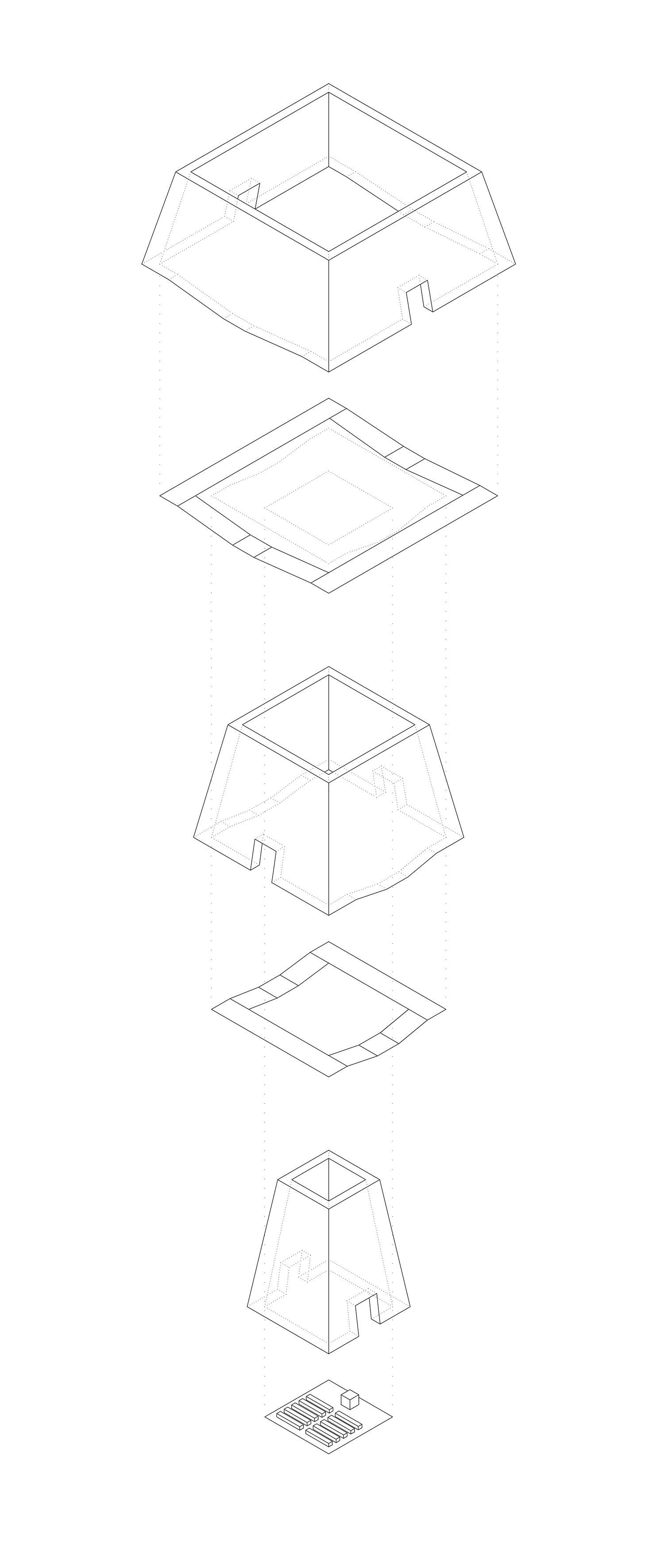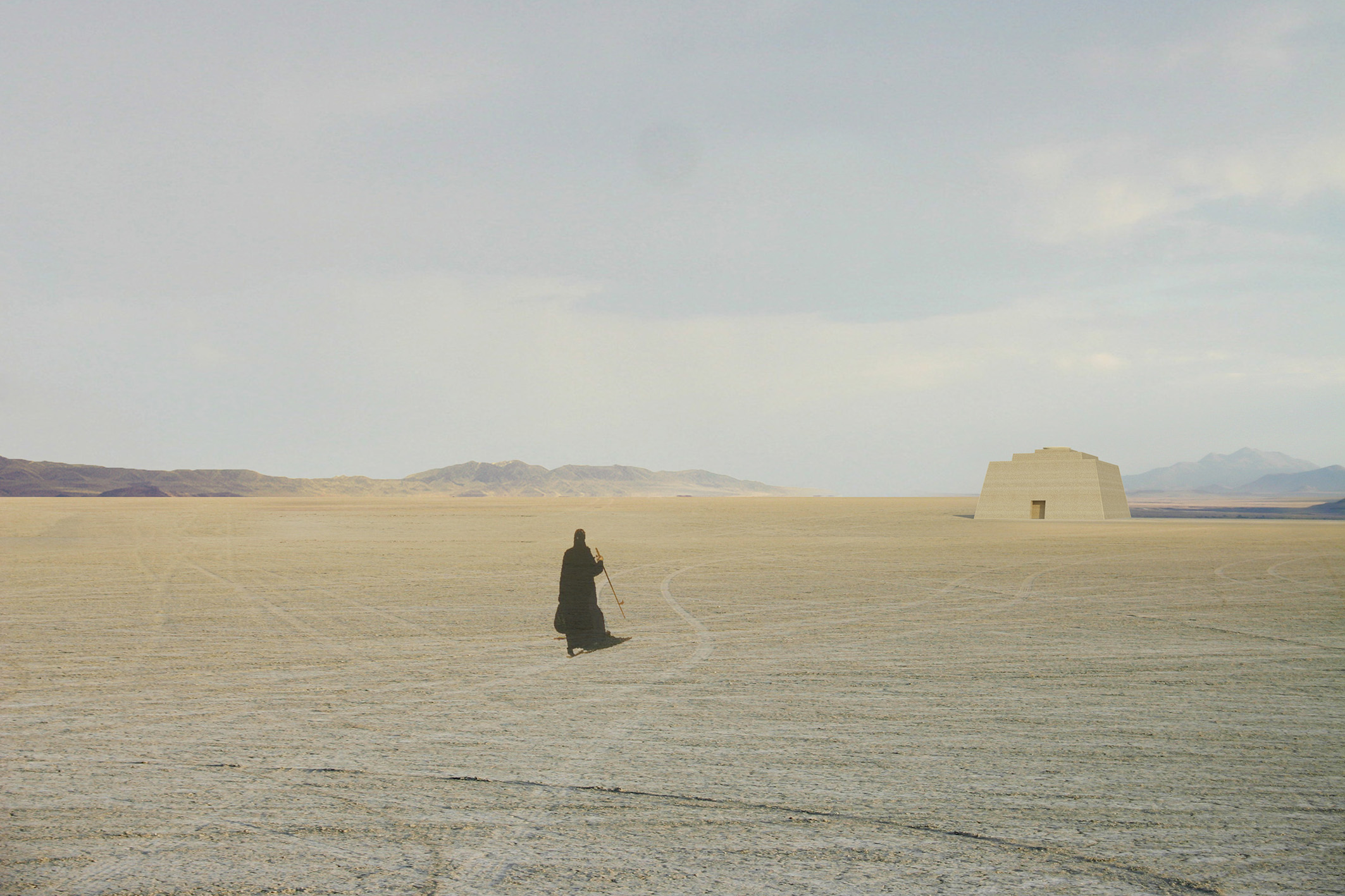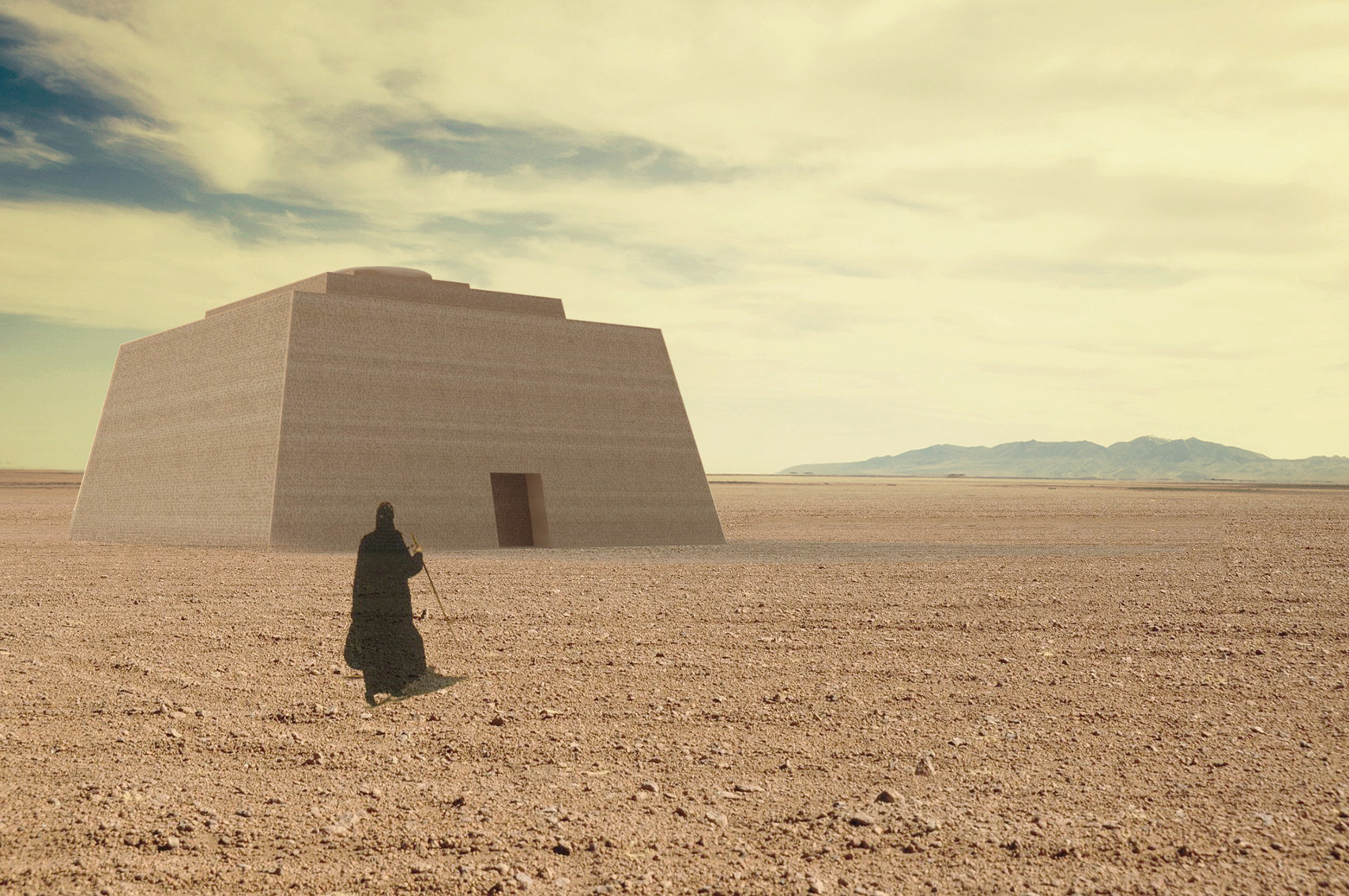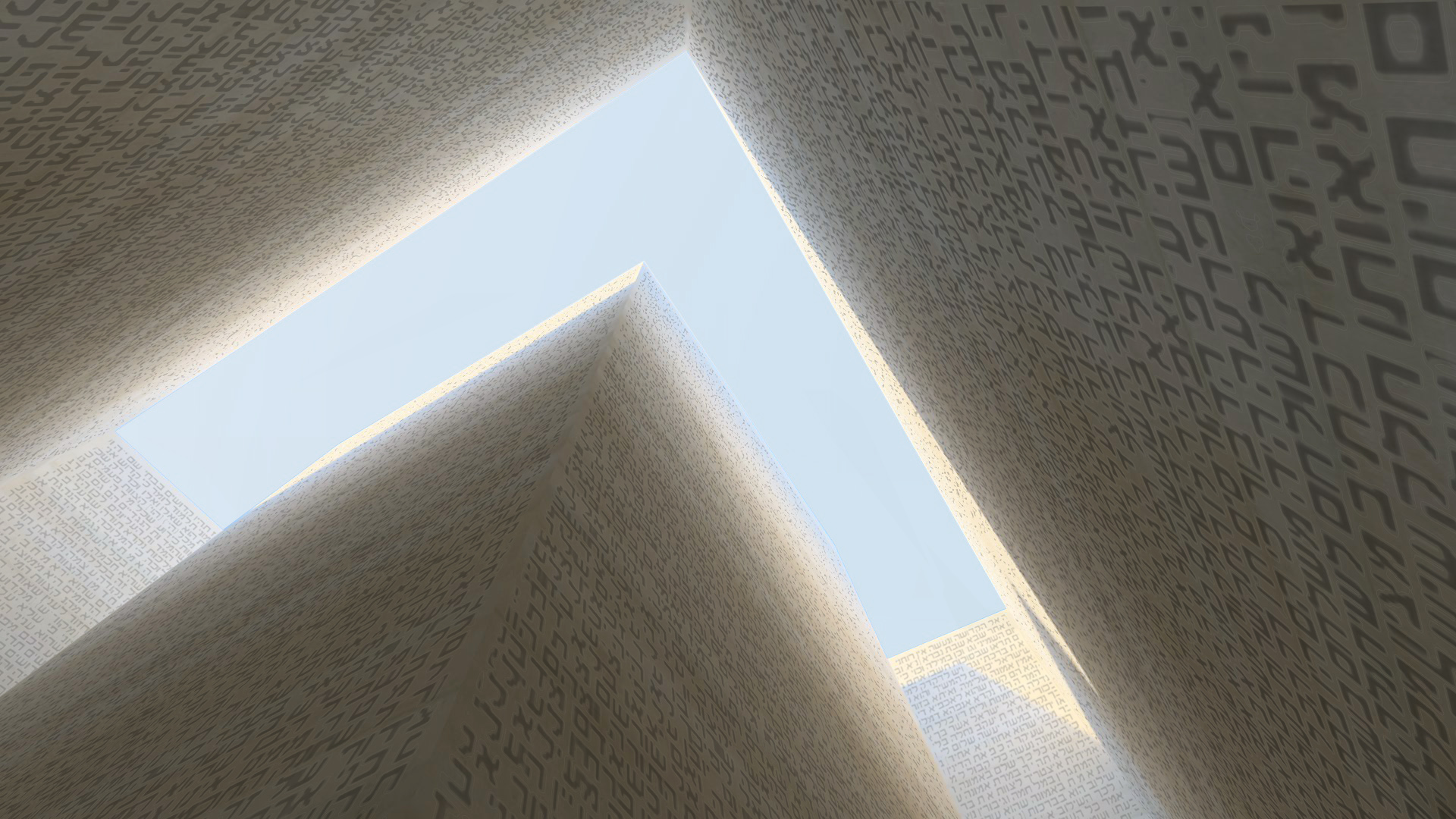Holy Earth
Project description:
Synagogue in the desert
Place:
Israel
Function:
Public, Religious
Area:
623 m2
Materials:
Cement-stabilized rammed earth
Role:
Author
Holy Earth project is an identification of history and philosophy of one's most immemorial cultures – Hebrew civilization.
Since its origin in Mesopotamia till our times the ability to interact with different cultures, due to lack of their own land, was one of the key features of Jewish people. Probably that is the main reason of such reverent attitude to the main and most memorable Jews location after the Exodus from Egypt – Jerusalem.
At this time Hebrew culture was able to fully express oneself in both spiritual and materialistic ways. Solomon’s temple – first monumental Hebrew religious building – has become the real symbol of that expression.
Before Solomon’s temple was erected Jewish religious structures were made as built-up constructions, oriented on nomadic way of life. Those temporary structures determine a fundamental spatial organization principle of the Solomon’s temple – step-by-step space development in which you need to go through the series of rooms to reach the most holy place.
Symbolism and hierarchy of this spatial organization scheme actually distances it from the Hebrew religion concept. The concept which is tolerant to variable interpretations of holy writings by different believers. In other words freedom of world’s perception by different people is the key principle of Jewish culture in general. Search of your own way of living, variety of answers to meaningful questions are the main Hebrew culture characteristics.
![]()
Based on those particular principles project's concept of the new temple has occurred – labyrinth-like space which is able to provide a variety of ways and moving directions to every visitor – equally for those who came intentionally or occasionally.
Visible surfaces along the way to the central space represent the text – Torah – first five books of canonical Hebrew and Christian Bible: Genesis, Exodus, Leviticus, Numbers and Deuteronomy. Walls of the new temple are made of large-sized rammed earth blocks stabilised by concrete add – material-metaphor symbolizing the striving of Jewish people for their own land through all the history.
After the labyrinth visitors passing through enter the main temple space, however this travel is not hierarchical as Solomon’s temple spatial journey was.The new temple stands on the history and tradition of Hebrew civilization but at the same time it should not be just a space for religious ceremonies. It should be a place for every visitor with different mindset to chose his own path.
![]()

Plan and axonometry








